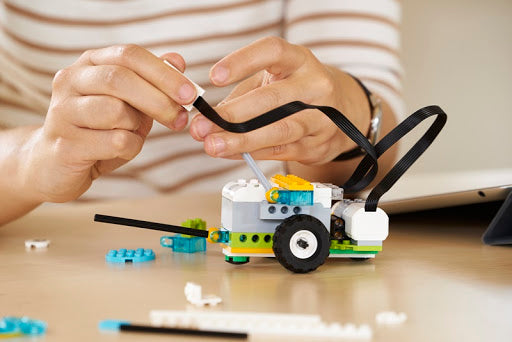Junior Robotics with LEGO WeDo 2.0
This class is a perfect introduction to programming, robotics and mechanics. Your students will explore these concepts in a fun and interactive way. We use sensors, make noises and try to give our robot friends plenty of personality! This is a great opportunity for students as young as five to have a go with robotics technology.
Age range: 5-8 years old (Year 1-3)
Session Length: 60-90 minutes
Price: $6.50 per child per hour (Minimum $80 per hour)
Capacity: Up to 32 children
- - Robots are machines.
- - We can give our robot instructions using code.
-
- We need to tell our robot exactly what we want it to do - robots are not very clever by themselves.
Students use an iPad and the LEGO WeDo 2.0 app to code a small driving robot, then build it. Once the class has completed the basic build, students investigate a motion sensor and experiment with their code, producing sound, changing direction and speed.
We are learning to:
- - Use coding apps on touchscreen devices
- - Build simple mechanical LEGO models
- - Follow pictorial instructions
Technological Knowledge: (Levels 1-3)
- Understand that technological systems have inputs, controlled transformations, and outputs.
- Create and continue sequential patterns.
Nature of Technology: (Levels 1-2)
- Understand that technological outcomes are products or systems developed by people and have a physical and a functional nature.
Computational Thinking: (Progress outcomes 1-2)
- Use algorithms to create simple programs involving outputs and sequencing in age-appropriate programming environments.
- Thinking:
- Students engage in computational thinking skills to understand how their robot receives and processes instructions and information.
- Using language, symbols and text:
- Students think about appropriate instructions for a robot with wheels, and build from pictorial instructions. Students translate their ideas into code using symbols and image based coding language.
More resources are coming soon, but in the meantime why not check out our simple engineering challenge A Chair for Bear? It's a great task to get your students thinking about the design process.
We also have a blank engineering design process that you can adapt to suit the needs of your class.
Feel free to download any of our free worksheets.
Share

















